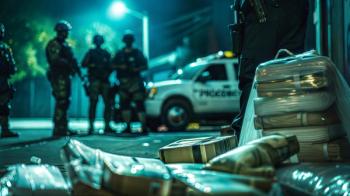
Spectroscopists Learn About Efforts to Advance Materials Testing for Art Conservation at Metropolitan Museum of Art
The December meeting of the New York–New Jersey chapter of the Society for Applied Spectroscopy (NYSAS), held at the Metropolitan Museum of Art in New York (“The Met”), drew an audience of students and professionals to hear talks on material testing by Eric Breitung, PhD, a senior research scientist, and Catherine Stephens, PhD, an associate research scientist, both from The Met.
The December meeting of the New York–New Jersey chapter of the Society for Applied Spectroscopy (NYSAS), held at the Metropolitan Museum of Art in New York (“The Met”), drew an audience of students and professionals to hear talks on material testing by Eric Breitung, PhD, a senior research scientist, and Catherine Stephens, PhD, an associate research scientist, both from The Met.
Exposure to common materials used in contact with or near works of art can cause degradation. To assess such materials, The Met is evaluating and implementing advanced analytical materials testing methods and protocols. For decades, museums, libraries, and archives have used the fairly rudimentary and difficult-to-reproduce Oddy test to evaluate materials. For this test, the material in question is placed in a jar with a small amount of water and metal coupons made of pure copper, silver, and lead. The jar is sealed and aged at 60 °C for 28 days. Materials that cause the metals to tarnish or corrode are considered unusable near cultural heritage objects. Not only does the Oddy test suffer from irreproducibility, but it has another fundamental drawback: It was designed with the intent of protecting metals. Given that historical cultural heritage objects contain organic materials such as velum and paper, it is unclear whether the metal-based Oddy test is appropriate for those classes of materials.
Because of these concerns, the Preventive Conservation Science Laboratory in The Met’s Scientific Research Department is exploring the use of gas chromatography–mass spectrometry (GC–MS) methods to evaluate materials, and ion chromatography (IC) and UV–vis reflective spectroscopy to evaluate a paper-coupon version of the Oddy test. These methods provide an opportunity to move The Met and the art conservation science community from a labor intensive, subjective, and irreproducible test to automatable and quantifiable tests that provide options for understanding how best to modify or clean commercially available materials and address the issue of the sensitivity of organic materials compared to metal materials.
The presentations provided an overview of the Preventive Conservation Science Laboratory, which is responsible for advising art conservators, designers, curators, and building engineers on how best to provide a safe environment for The Met’s collections, and provided an in-depth look at materials testing at The Met. The spectroscopy experts in the audience offered suggestions on possible materials and other tests, and the audience–speaker interactions were valuable. Following the talk, a tour of the labs was given, showing the many instruments used for analyzing art and determining how to preserve it better.
The Met’s Department of Scientific Research hosts research fellows, interns, and volunteers. In fact, the Met’s version of the Oddy test was developed by volunteer Joseph Bamberger in 1999 (1). If you are interested in working with scientists at The Met, you can find upcoming opportunities at the following links or by contacting Eric Breitung at
Fellowship opportunities at The Met:
Internships at The Met:
Volunteering at The Met
Reference
1. J.A. Bamberger, E.G. Howe, and G. Wheeler, Studies in Conservation44(2), 86–90 (1999).
Kathryn Lee is the president of the New York–New Jersey chapter of the Society for Applied Spectroscopy.
Newsletter
Get essential updates on the latest spectroscopy technologies, regulatory standards, and best practices—subscribe today to Spectroscopy.





